- Beans: Growing in the Vegetable Garden
- Varieties of Beans
- Planting and Care
- Harvesting Beans
- Planning Your Bean Patch
- Choosing the Right Location
- Deciding on Varieties
- Preparing the Soil
- Spacing and Planting
- Caring for Your Bean Patch
- Sowing and Caring for Bean Plants
- 1. Choosing the Right Variety of Beans
- 2. Preparing the Soil
- 3. Sowing the Seeds
- 4. Watering and Mulching
- 5. Fertilizing
- 6. Supporting Pole Beans
- 7. Pest and Disease Management
- 8. Harvesting Beans
- Harvesting and Storage Tips
- 1. Timing your harvest
- 2. Harvesting methods
- 3. Storing fresh beans
- 4. Blanching and freezing
- 5. Canning beans
- 6. Drying beans
- Varieties of Beans
- Green Beans
- Yellow Beans
- Kidney Beans
- Black Beans
- Pinto Beans
- Navy Beans
- Lima Beans
- Runner Beans
- Adzuki Beans
- Conclusion
- Choosing the Right Variety for Your Garden
- Growth Habit
- Flavor
- Disease Resistance
- Growing Conditions
- Harvest Time
- Seed Availability
- Common Bean Plant Problems and Solutions
- 1. Disease
- 2. Pests
- 3. Nutrient Deficiency
- 4. Environmental Factors
- 5. Weeds
- Best Practices for Bean Plant Nutrition
- Expert Tips and Advice for Bean Gardening
- 1. Choose the right variety
- 2. Prepare the soil
- 3. Plant at the right time
- 4. Provide support for pole beans
- 5. Water properly
- 6. Harvest regularly
- 7. Rotate crops
- 8. Store beans properly
- 9. Save seeds for future planting
- 10. Enjoy the process!
- “Question-Answer”
- What are the different varieties of beans that can be grown in a vegetable garden?
- How do I plant beans in my vegetable garden?
- When should I harvest my beans from the vegetable garden?
- Can I store the beans from my vegetable garden?
- What is the best way to cook beans from my vegetable garden?
- Are beans easy to grow in a vegetable garden?
- How do I prevent pests and diseases from affecting my bean plants in the vegetable garden?
- “Video” Growing Green Beans for Maximum Yield Bush Beans and Pole Beans
Beans are a versatile and nutritious vegetable that can be easily grown in a home garden. With their wide range of varieties and flavors, they are a favorite of many gardeners. Whether you’re a beginner or a seasoned gardener, there are plenty of tips and advice available to help you successfully grow and store your beans.
When it comes to growing beans, there are a few key factors to consider. First, choose the right variety for your climate and garden. There are bush beans, which don’t require support and are great for small spaces, and pole beans, which need a trellis or support structure. It’s also important to provide your beans with well-drained soil and plenty of sunlight for optimal growth.
Once your beans are planted and growing, it’s important to properly care for them. Regular watering is essential, especially during dry periods, to ensure healthy plant development and pod production. Mulching around the base of the plants can help conserve moisture and suppress weeds. It’s also a good idea to regularly inspect your plants for pests and diseases and take action as necessary.
When it comes time to harvest your beans, it’s important to pick them at the right stage of ripeness. Harvesting beans when they are young and tender will ensure the best flavor. It’s also a good idea to harvest beans regularly, as this will encourage the plants to continue producing more pods. Once harvested, beans can be stored in the refrigerator for up to a week, or preserved by freezing or canning for longer-term storage.
Overall, growing beans in your vegetable garden can be a rewarding and enjoyable experience. With a little bit of planning and care, you can enjoy a bountiful harvest of delicious and nutritious beans throughout the growing season.
Beans: Growing in the Vegetable Garden
Beans are a versatile and easy-to-grow vegetable that can thrive in almost any vegetable garden. Whether you have a small backyard garden or a larger plot, beans can be a great addition to your vegetable lineup. Let’s explore some tips and advice for growing beans in your garden.
Varieties of Beans

There are many varieties of beans to choose from, including bush beans and pole beans. Bush beans, also known as determinate beans, are compact plants that don’t require support. They are a great choice for small gardens or containers. Pole beans, on the other hand, are vining plants that climb up trellises or poles. They require support and can produce higher yields compared to bush beans.
Some popular varieties of beans include:
- Green beans
- Yellow beans
- String beans
- Snap beans
- Lima beans
Planting and Care
Beans prefer well-draining soil and full sun. They should be planted after the last frost date in your area. Before planting, prepare the soil by removing any weeds and loosening it with a garden fork or tiller. Beans can be sown directly into the ground, or you can start them indoors and transplant them later.
When planting beans, sow the seeds about 1 inch deep and 4-6 inches apart. If planting pole beans, set up a trellis or pole for them to climb. Water the seeds thoroughly after planting and keep the soil evenly moist throughout the growing season.
It’s important to provide adequate support for pole beans to prevent them from collapsing under their own weight. You can use bamboo stakes, trellises, or even old ladders for vertical support.
Regular weeding and mulching can help keep the soil moist and prevent weed competition. Beans generally don’t require much fertilizer, but if your soil is lacking in nutrients, you can apply a balanced fertilizer according to package instructions.
Harvesting Beans
Beans are typically ready for harvest within 50-70 days of planting, depending on the variety. Pick the beans when they are young and tender, as they can become tough and stringy if left on the plant for too long. Harvesting regularly will also encourage more bean production.
To harvest, hold the stem of the bean and gently twist or snap it off the plant. You can also use pruning shears or scissors to cut the beans off. Store harvested beans in the refrigerator, and they should stay fresh for up to a week.
| Variety | Maturity | Description |
|---|---|---|
| Green beans | 50-60 days | Long, slender pods with green seeds |
| Yellow beans | 50-60 days | Yellow pods with yellow or white seeds |
| String beans | 50-60 days | Stringless pods with tender seeds |
| Snap beans | 60-70 days | Round, fleshy pods with crisp seeds |
| Lima beans | 70-80 days | Flat, kidney-shaped pods with buttery seeds |
Now that you have some expert tips and advice for growing beans in your vegetable garden, it’s time to get started. With their delicious taste and nutritional benefits, beans will be a wonderful addition to your garden and your plate.
Planning Your Bean Patch
Choosing the Right Location

When planning your bean patch, it is important to choose the right location for optimal growth and yield. Beans thrive in sunny areas, so select a spot that receives at least 6-8 hours of direct sunlight per day. The soil should be well-draining and rich in organic matter. Avoid areas with dense shade or heavy clay soil, as these conditions can hinder the bean plants’ growth.
Deciding on Varieties
There are many different varieties of beans to choose from, each with its own unique flavor and growth habit. Some popular types include green beans, pole beans, and bush beans. Consider the space available in your garden and the amount of time you can dedicate to tending to the plants. Pole beans require support structures, such as trellises or stakes, while bush beans grow more compactly and don’t require additional support. Choose varieties based on your preferences and gardening abilities.
Preparing the Soil
Before planting your bean patch, prepare the soil to create the best growing conditions. Start by removing any weeds or grass from the area. Loosen the soil with a garden fork or tiller to a depth of about 8-10 inches. Incorporate organic matter, such as compost or well-rotted manure, to improve soil fertility and drainage.
Spacing and Planting
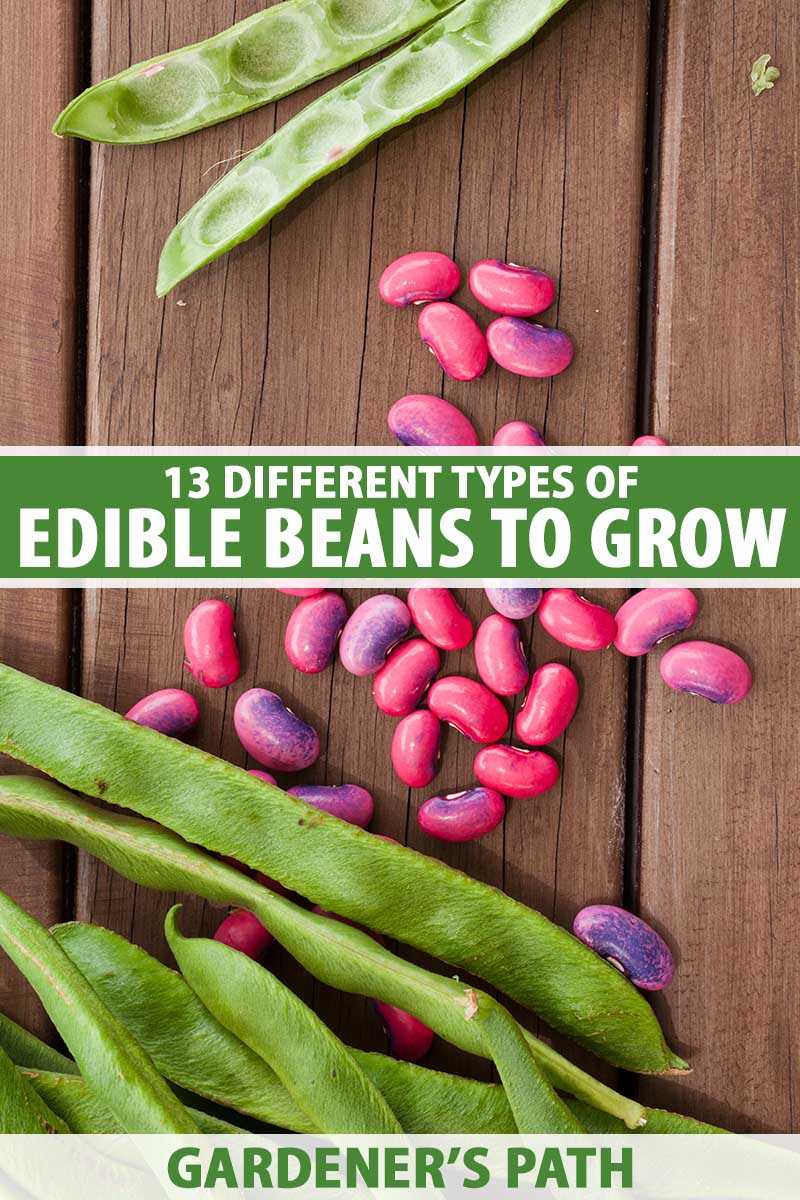
Spacing is crucial when planting beans to ensure good air circulation and access to sunlight. For bush beans, plant the seeds about 2-4 inches apart in rows that are spaced 18-24 inches apart. If you’re planting pole beans, set up a trellis or support structure first, then sow the seeds 4-6 inches apart at the base of each pole. Plant the seeds at a depth of about 1-1.5 inches.
Caring for Your Bean Patch
Once your beans have been planted, it is important to care for them properly to promote healthy growth and productivity. Water the plants regularly, keeping the soil evenly moist but not waterlogged. Mulch the soil around the plants to help retain moisture and suppress weed growth. Monitor for common bean pests, such as aphids or bean beetles, and take appropriate measures to control their population. As the plants grow, provide support structures for pole beans and gently guide the vines onto the trellis or stakes.
By following these planning steps and tending to your bean patch, you can enjoy a bountiful harvest of delicious and nutritious beans throughout the growing season.
Sowing and Caring for Bean Plants
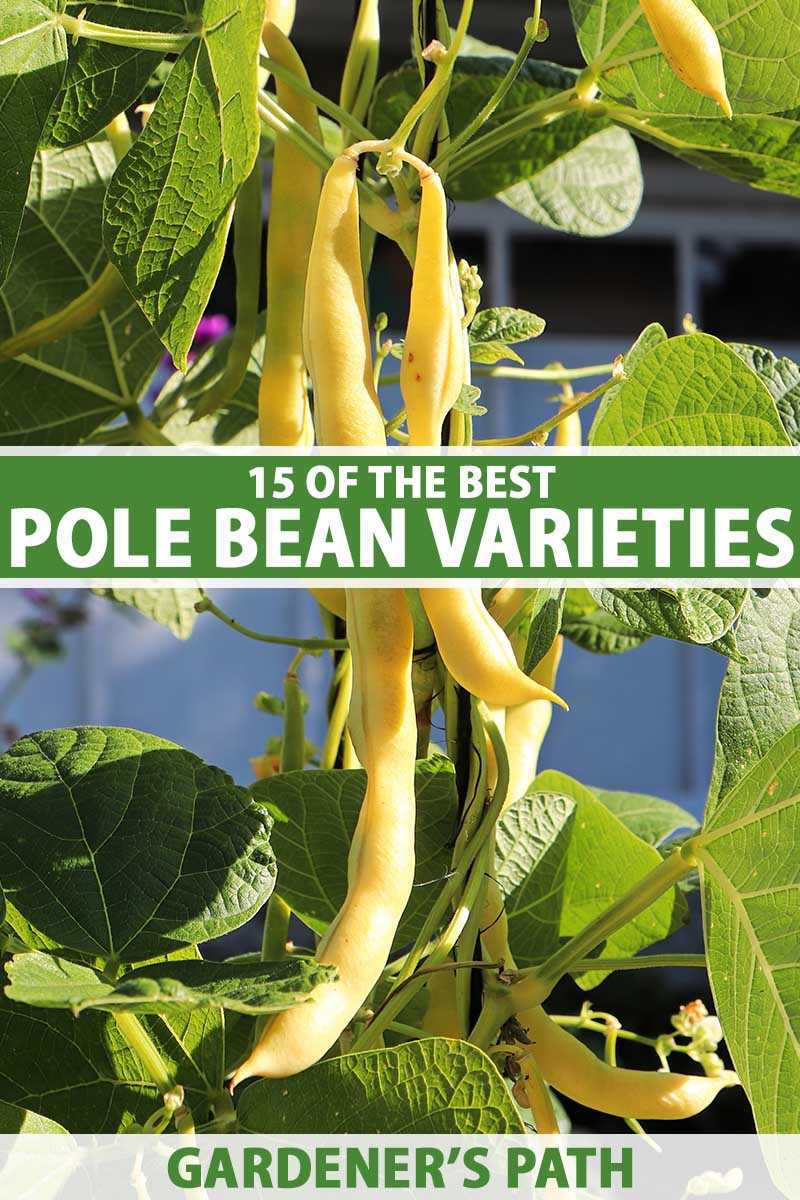
1. Choosing the Right Variety of Beans
Before sowing bean plants, it’s essential to choose the right variety for your garden. There are several types of beans to consider, including bush beans, pole beans, snap beans, and shell beans. Each variety has its own growth habit and flavor.
2. Preparing the Soil
Bean plants prefer well-draining soil with a pH of 6.0 to 7.0. Before planting, prepare the soil by removing any weeds, rocks, or other debris. Till the soil to a depth of 6-8 inches and incorporate organic matter like compost or well-rotted manure to improve fertility.
3. Sowing the Seeds
When sowing bean seeds, it’s important to plant them at the right depth. Generally, beans should be planted 1-2 inches deep and spaced 2-4 inches apart. If you’re planting pole beans, provide support structures like trellises or poles for them to climb on.
- Direct Sowing: Beans are best sown directly into the garden after the last frost date, as they don’t transplant well. Choose a sunny spot in the garden and sow the seeds according to the recommended spacing.
- Indoor Sowing: If you have a short growing season or want an early start, you can start bean plants indoors 2-4 weeks before the last frost. Use biodegradable pots to minimize root disturbance when transplanting.
4. Watering and Mulching
Keep the soil consistently moist but not waterlogged during the growing season. Beans require about 1 inch of water per week, especially during flowering and pod development. Mulch the soil around the plants to conserve moisture, suppress weeds, and regulate soil temperature.
5. Fertilizing
Beans are relatively low-maintenance plants that don’t require excessive fertilizer. However, incorporating compost or a balanced organic fertilizer into the soil before planting can provide necessary nutrients. Avoid over-fertilizing, as it can lead to excessive foliage growth at the expense of bean production.
6. Supporting Pole Beans
If you’re growing pole beans, provide support structures like trellises, stakes, or bamboo poles for the plants to climb on. This helps maximize space, promotes better airflow, and makes harvesting easier. Train the vines onto the support structures as they grow.
7. Pest and Disease Management
Regularly inspect your bean plants for pests and diseases. Common bean pests include aphids, spider mites, and bean beetles. Use organic pest control methods, such as handpicking pests or using insecticidal soaps if necessary. Proper spacing, good airflow, and avoiding overhead watering can help prevent diseases like powdery mildew and bacterial blight.
8. Harvesting Beans
Harvest snap beans when the pods are firm, crisp, and have reached their full size but are still young. For shell beans, harvest when the pods are plump and the beans inside are fully developed. Harvesting regularly promotes continuous production. Use scissors or your fingers to harvest, being careful not to damage the plant.
Following these tips and guidelines will help you successfully sow and care for your bean plants, ensuring a bountiful harvest of fresh and delicious beans!
Harvesting and Storage Tips
Harvesting beans at the right time ensures that you get the best flavor and texture. Here are some tips to help you harvest and store beans:
1. Timing your harvest
Beans can be harvested when the pods are young and tender, usually around 6 to 8 inches in length. Look for pods that are firm, crisp, and bright in color. Avoid harvesting beans that are overripe, as they tend to be tough and stringy.
2. Harvesting methods
There are two common methods for harvesting beans: picking them by hand or using scissors. If you choose to pick them by hand, be gentle to avoid damaging the plants. If you prefer using scissors, snip the beans off at the stem, taking care not to cut into the plant.
3. Storing fresh beans
For short-term storage, place freshly harvested beans in a perforated plastic bag in the refrigerator. They can stay fresh for up to a week. Alternatively, you can store them in a plastic container lined with a damp paper towel to help retain moisture.
4. Blanching and freezing
If you have a surplus of beans, consider blanching and freezing them for long-term storage. Blanching involves briefly cooking the beans in boiling water, followed by immersing them in ice water to halt the cooking process. This helps preserve their flavor, color, and texture. Once blanched, drain the beans and pack them into freezer-safe containers or bags. They can be stored in the freezer for up to a year.
5. Canning beans
Another method for preserving beans is canning. Canning requires pressure canning equipment and properly sterilized jars. Follow a trusted canning recipe to ensure safe preservation and storage of your beans.
6. Drying beans
If you are growing dry beans, you can allow the pods to dry on the plant until they turn brown and brittle. Harvest the dried pods and shell out the beans. Store the beans in airtight containers in a cool, dry place. They can last for several months.
By following these harvesting and storage tips, you can enjoy the flavors of your homegrown beans even after the growing season has ended.
Varieties of Beans
Beans are a versatile and nutritious vegetable that can be enjoyed in many different dishes. There are several different varieties of beans, each with its own unique characteristics and culinary uses. Here are some of the most popular varieties of beans.
Green Beans
Green beans, also known as snap beans, are one of the most common types of beans. They are harvested while the pods are still young and tender, before the seeds inside have fully developed. Green beans can be eaten raw or cooked, and they are commonly found in stir-fries, soups, salads, and side dishes.
Yellow Beans
Yellow beans, also called wax beans, are similar to green beans but have a yellow or golden color. They have a slightly milder flavor and a tender texture. Yellow beans can be used interchangeably with green beans in most recipes.
Kidney Beans
Kidney beans are a popular variety of beans that are often used in chili, soups, and stews. They have a reddish-brown color and a kidney shape, hence the name. Kidney beans are rich in protein and fiber, making them a nutritious addition to any meal.
Black Beans
Black beans are small, oval-shaped beans that are commonly used in Latin American cuisine. They have a dense, meaty texture and a rich, earthy flavor. Black beans are often used in dishes like black bean soup, burritos, and salads.
Pinto Beans
Pinto beans are a popular variety of beans that are often used in Mexican and Tex-Mex cooking. They have a beige color with brown speckles and a creamy texture when cooked. Pinto beans are commonly used in dishes like refried beans, chili, and bean dip.
Navy Beans
Navy beans, also known as haricot beans, are small, white beans that are often used in soups, stews, and baked beans. They have a mild flavor and a smooth texture when cooked.
Lima Beans
Lima beans, also called butter beans, are large, flat beans that have a buttery texture and a slightly sweet flavor. They are often used in stews, succotash, and casseroles.
Runner Beans
Runner beans are a type of green bean that are popular in British cuisine. They have a slightly tougher texture than green beans but are still delicious when cooked. Runner beans are often steamed or boiled and served as a side dish.
Adzuki Beans
Adzuki beans are small, red beans that are commonly used in Asian cuisine. They have a slightly sweet and nutty flavor. Adzuki beans are often used in sweet dishes like red bean paste, as well as savory dishes like soups and stews.
Conclusion
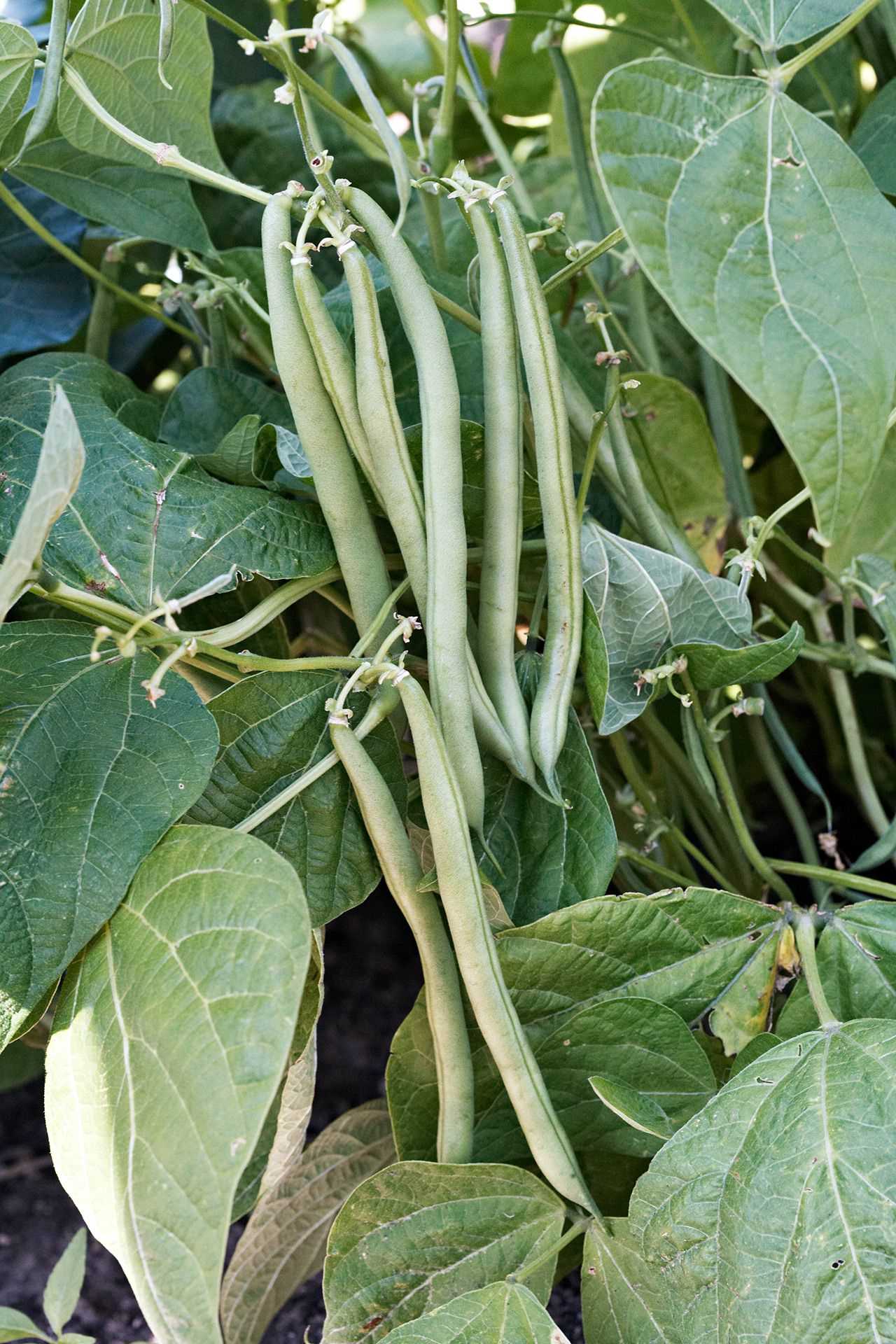
These are just a few of the many varieties of beans available. Each variety has its own distinct taste and texture, making beans a versatile ingredient in the kitchen. Whether you prefer green beans, black beans, or any other variety, beans are a nutritious and delicious addition to any meal.
Choosing the Right Variety for Your Garden
When it comes to growing beans in your vegetable garden, choosing the right variety is crucial for the success of your crop. Different varieties of beans have different characteristics, such as growth habit, flavor, and disease resistance. Here are some factors to consider when choosing the right variety for your garden:
Growth Habit
Beans can have either a bush or a climbing growth habit. Bush beans grow in a compact, bush-like shape and are usually easier to grow and harvest. They take up less space and don’t require support structures. Climbing beans, on the other hand, need trellises or other support structures to climb on. They tend to produce a higher yield per plant but require more maintenance.
Flavor
Beans come in a variety of flavors, from mild to strong. Some varieties have a nutty flavor, while others are sweeter or more savory. Consider your personal preferences and how you plan to use the beans in your cooking when choosing the flavor profile that suits you best.
Disease Resistance
Some bean varieties are more resistant to common diseases and pests than others. Check the seed packet or do some research to find out if the variety you’re considering has any resistance to diseases like bean mosaic virus, bean rust, or common pests like aphids or bean weevils. Choosing disease-resistant varieties can help ensure a healthier, more productive crop.
Growing Conditions
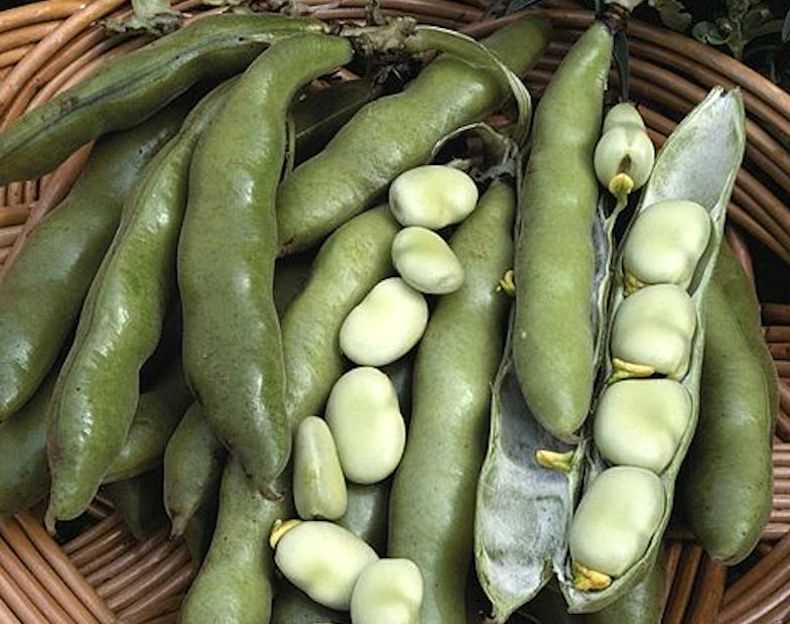
Consider the climate and growing conditions in your area when choosing bean varieties. Some beans are more tolerant of heat or cold, while others thrive in specific soil types. Look for varieties that are well-suited to your region for optimal growth and yield.
Harvest Time
Bean varieties can have different maturity dates, ranging from around 50 to 90 days from planting to harvest. If you have a short growing season or want to stagger your harvest to enjoy fresh beans over a longer period, look for varieties with shorter maturity dates or plant different varieties that mature at different times.
Seed Availability
Lastly, consider the availability of the bean variety’s seeds. Some varieties may be more common and readily available at local garden centers or from online seed suppliers. Check with local growers or gardening groups to see if they have any recommendations or access to unique, heirloom varieties that you might be interested in.
By considering these factors and doing a little research, you can choose the right bean variety for your garden that suits your preferences and growing conditions. Whether you go for a bush or climbing variety, a mild or strong flavor, or prioritize disease resistance, growing beans can be a rewarding and delicious addition to your vegetable garden.
Common Bean Plant Problems and Solutions
1. Disease
Beans can be affected by various diseases, including:
- Bean rust
- Bean mosaic virus
- Anthracnose
Solutions:
- Plant disease-resistant bean varieties.
- Use proper sanitation techniques, such as removing and destroying infected plants.
- Apply fungicides or other treatments as recommended by a local garden expert.
2. Pests
Common pests that can damage bean plants include:
- Aphids
- Bean weevils
- Spider mites
Solutions:
- Regularly inspect plants for signs of pests.
- Use organic pest control methods, such as insecticidal soaps or neem oil.
- Introduce natural predators, like ladybugs or lacewings, to the garden to control pest populations.
3. Nutrient Deficiency
Bean plants may suffer from nutrient deficiencies, such as:
- Nitrogen deficiency
- Phosphorus deficiency
- Potassium deficiency
Solutions:
- Test the soil and adjust nutrient levels as needed.
- Use organic fertilizers or amendments to provide the necessary nutrients.
- Ensure proper watering and drainage to prevent nutrient leaching.
4. Environmental Factors
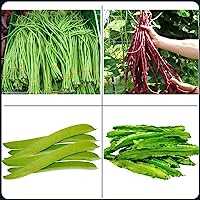
Common environmental factors that can impact bean plants include:
- Drought
- Excessive heat
- Freezing temperatures
Solutions:
- Water bean plants regularly and deeply, especially during dry spells.
- Provide shade or use mulch to protect plants from excessive heat.
- Cover plants or bring them indoors if frost or freezing temperatures are expected.
5. Weeds
Weeds can compete with bean plants for nutrients and water.
Solutions:
- Regularly weed the garden to remove competing plants.
- Use mulch to prevent weed growth.
- Consider using landscape fabric or weed barriers to further reduce weed presence.
Best Practices for Bean Plant Nutrition
- Soil Preparation: Before planting beans, it is important to prepare the soil adequately. Start by clearing any weeds or debris from the planting area. Then, incorporate organic matter, such as compost or well-rotted manure, into the soil to improve its structure and fertility. This will provide a nutrient-rich environment for the beans to grow.
- Nitrogen: Beans are nitrogen-fixing plants, which means they can take nitrogen from the air and convert it into a form that is usable by plants. However, for optimal growth, it is still recommended to provide additional nitrogen fertilizer. Apply a balanced fertilizer with a higher nitrogen content before planting or side-dress the plants with nitrogen once they start to grow.
- Phosphorus and Potassium: Beans also require phosphorus and potassium for healthy growth and production. Incorporate a phosphorus-rich fertilizer, such as bone meal or rock phosphate, into the soil before planting. Potassium can be provided through the use of a balanced fertilizer or by adding potash to the soil.
- Micro and Macronutrients: Beans benefit from a variety of micronutrients, including iron, calcium, and magnesium. To ensure these nutrients are available to the plants, consider adding a complete micronutrient fertilizer or using foliar sprays containing these nutrients. Additionally, beans require adequate amounts of macronutrients, such as calcium and magnesium, which can be supplied through the addition of dolomitic lime to the soil.
- Watering: Proper watering is essential for bean plants to thrive. Keep the soil consistently moist, but not waterlogged. Water deeply and infrequently, allowing the top few inches of soil to dry out between waterings. This will help prevent diseases and improve nutrient uptake.
- Mulching: Mulching around bean plants can help conserve moisture in the soil, suppress weed growth, and regulate soil temperature. Use organic mulches, such as straw or wood chips, and apply a layer around the plants, being careful not to cover the stems or leaves.
- Monitoring and Adjusting: Regularly monitor the health of your bean plants and check for any nutrient deficiencies. Symptoms such as yellowing leaves or stunted growth may indicate a nutrient imbalance. If necessary, adjust the nutrient levels by applying appropriate fertilizers or amendments.
Expert Tips and Advice for Bean Gardening
1. Choose the right variety
When deciding which beans to grow in your garden, it’s important to consider the variety you want to plant. There are many different types of beans, including bush beans, pole beans, snap beans, and shell beans. Each variety has its own growth habit, flavor, and texture. Consider what you plan to use the beans for – fresh eating, canning, or drying – and choose a variety that suits your needs.
2. Prepare the soil
Beans thrive in well-drained soil that is rich in organic matter. Before planting, prepare the soil by removing weeds and adding compost or aged manure. This will help improve soil fertility and provide the nutrients necessary for healthy bean growth. Avoid planting beans in soil that is waterlogged or heavy clay, as this can lead to poor plant establishment and stunted growth.
3. Plant at the right time
Beans are warm-season crops that prefer soil temperatures between 60-85°F (15-29°C). Planting too early, when the soil is cold and damp, can result in poor germination and seedling establishment. Wait until the soil has warmed up and the danger of frost has passed before planting your beans. In most regions, this is typically in late spring or early summer.
4. Provide support for pole beans
If you’re growing pole beans, make sure to provide them with a trellis, fence, or other type of support. These vining beans can grow quite tall and will benefit from vertical support, which will help keep the plants upright and make harvesting easier. You can use bamboo stakes, tomato cages, or even a string trellis to support your pole beans.
5. Water properly
Beans need consistent moisture to grow and produce a good harvest. Water your bean plants deeply and regularly, especially during dry periods. Be careful not to overwater, as this can lead to root rot and other fungal diseases. Avoid getting the leaves wet when watering, as this can increase the risk of foliage diseases. Applying a layer of mulch around the plants can help conserve moisture and suppress weeds.
6. Harvest regularly
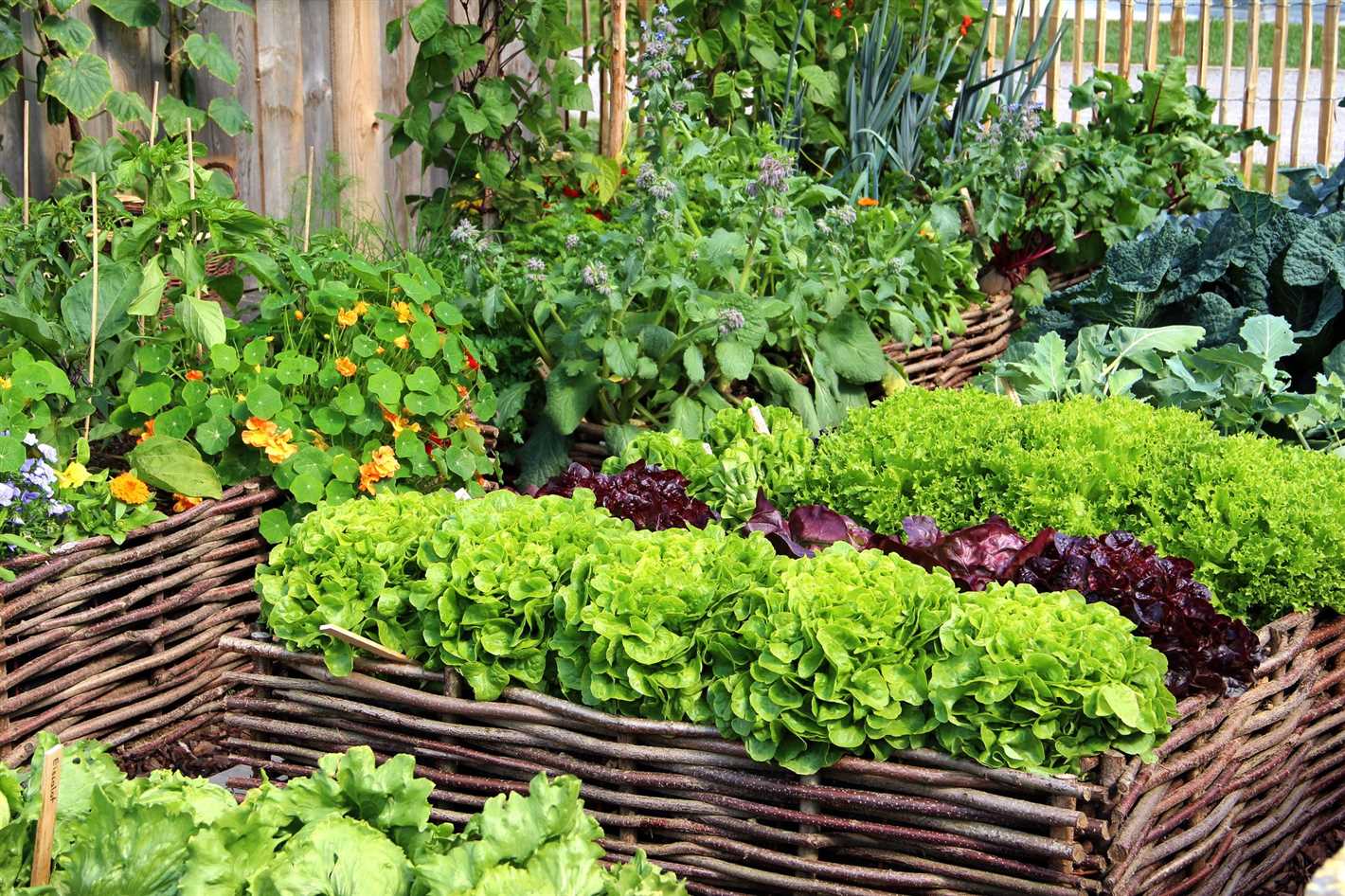
To encourage continued bean production, it’s important to harvest your beans regularly, especially when they are young and tender. Beans left on the plant for too long can become tough and stringy. Harvest snap beans when the pods are still firm but before the seeds inside begin to bulge. Shell beans can be harvested when the pods have filled out and the seeds are fully formed. If you’re growing dry beans, allow the pods to dry on the plant before harvesting.
7. Rotate crops
Beans are susceptible to certain pests and diseases, so it’s important to rotate your crops each year. Avoid planting beans in the same spot for consecutive growing seasons, as this can increase the risk of soilborne diseases and pest buildup. Rotate your bean crops with other vegetable families to help maintain soil health and reduce pest pressure.
8. Store beans properly
After harvesting, store your beans in a cool, dry place to maintain their quality and flavor. Beans can be stored in a breathable container, such as a paper bag or mesh bag, to prevent moisture buildup and reduce the risk of mold. Avoid washing the beans before storage, as excess moisture can cause them to spoil. Properly stored beans can be enjoyed for several months after harvest.
9. Save seeds for future planting
If you want to save seeds from your bean plants for future planting, choose healthy, disease-free plants with desirable traits. Allow the beans to fully mature and dry on the plant before harvesting the pods. Remove the beans from the pods, and store them in a cool, dry place until you’re ready to plant them. Label and date the seed packets for easy identification in the future.
10. Enjoy the process!
Gardening is a rewarding and enjoyable activity, and growing beans is no exception. Take the time to observe and appreciate the growth and development of your bean plants. Enjoy the fresh flavors and textures of homegrown beans, and share your harvest with family and friends. Embrace the learning experience, and don’t be afraid to experiment with different varieties and growing techniques.
“Question-Answer”
What are the different varieties of beans that can be grown in a vegetable garden?
There are many different varieties of beans that can be grown in a vegetable garden, including bush beans, pole beans, and runner beans. Some popular varieties include Kentucky Wonder, Blue Lake, and Scarlet Runner.
How do I plant beans in my vegetable garden?
To plant beans in your vegetable garden, you should first prepare the soil by removing any weeds and loosening it with a garden fork or tiller. Then, create a trench or furrow about 1 inch deep, and plant the bean seeds about 2 inches apart. Finally, cover the seeds with soil and water them well.
When should I harvest my beans from the vegetable garden?
Beans can be harvested when they are young and tender, typically around 50-60 days after planting. They should be picked before the seeds inside start to swell. Snap beans are generally harvested when they are 4-6 inches long, while shelling beans are harvested when the pods are plump and the beans inside are fully developed.
Can I store the beans from my vegetable garden?
Yes, you can store beans from your vegetable garden. First, you should dry the beans by leaving them on the plants until the pods have turned brown and dry. Then, remove the beans from the pods and spread them out on a flat surface to dry completely. Once they are completely dried, you can store them in airtight containers in a cool, dry place for up to a year.
What is the best way to cook beans from my vegetable garden?
There are many delicious ways to cook beans from your vegetable garden. You can boil them until they are tender and then season them with salt, pepper, and your favorite herbs and spices. You can also sauté them with garlic and olive oil, or add them to soups, stews, and casseroles. Beans are very versatile and can be incorporated into a variety of dishes.
Are beans easy to grow in a vegetable garden?
Yes, beans are generally easy to grow in a vegetable garden. They are hardy plants that can tolerate a variety of soil conditions and require minimal maintenance. However, they do require full sun and well-drained soil. With the right conditions and proper care, beans can be a rewarding and productive crop to grow.
How do I prevent pests and diseases from affecting my bean plants in the vegetable garden?
To prevent pests and diseases from affecting your bean plants, it is important to practice good garden hygiene. This includes removing any weeds or debris that could harbor pests, rotating your bean crops every year to prevent the buildup of soil-borne diseases, and using organic pest control methods such as hand-picking insects or using insecticidal soap. Additionally, you can choose disease-resistant bean varieties to minimize the risk of infection.







